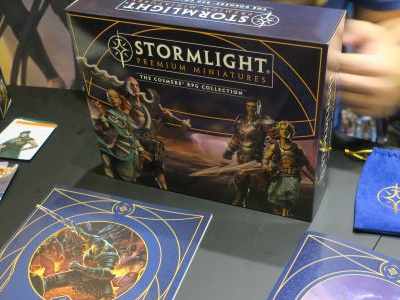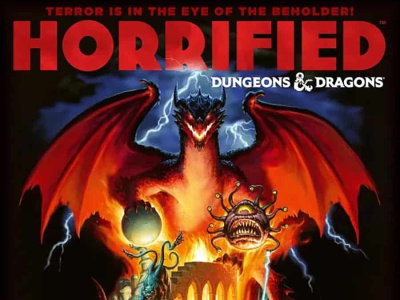Master of Orion: The Board Game
Publisher: Cryptozoic Entertainment
Release Date: September 6, 2017
Price: $35.00
Game Designer(s): Ekaterina Gorn and Igor Skyluev
Format: Card/Board Game
Number of Players: 2 to 4
Playing Time: 40-60 min.
Product #: CZE02505
Age Rating: 12+
ICv2 Rating: 4 Stars out of 5
While not perfect, this is an easy-to-learn game in the same genre as Race for the Galaxy. The use of the Master of Orion intellectual property gives it a name familiarity for anyone who played the series of computer games, and this game borrows from familiar concepts in those. In this game, only three kinds of resources are tracked: food, military power and production output. This simplicity makes the game easy for beginners to learn, but the strategies are more complex.
Each player can play as a generic human group, or from a list of alien species. Each species has minor strengths and weaknesses which affect how they play. Each player has a separate board, which is used to keep track of resources, as well as actions played.
Players play cards, expending resources to do so, but these cards allow them to take special actions and/or add to their resources on subsequent turns. The interesting mechanic is that players are limited to a small number of different stacks of cards, each representing a different planet, and only the card most recently played in each stack continues to allow the use of any special abilities that it grants. The rest only provide resources, still important.
The goal is to maximize victory points before the end of the game, which can end in multiple ways. Be careful, though, because ending the game by your actions doesn’t mean you will win… you might actually be behind once bonus points are counted.
The way combat works is both a strength and a weakness of the game. Players who don’t like "take that" mechanics will find the mild combat to be refreshing. Basically attackers just gain victory points, and the losing player loses morale points. No resources or cards are destroyed in combat normally, but losing too many morale points can cost you the game. You can get them back, though, by spending actions. The weakness of this approach is that it is difficult to reign in a player who has gotten a big lead, even if all of the other players cooperate. Attacking consumes military production points, but defending does not, and if the defender simply maximizes military levels and defends, they can often hold out long enough to win the game.
So, you have to pay attention to what other players are doing, and react immediately if you think you need to attack. Also, attacking provides a steady trickle of victory points, but you need a good infrastructure, and also to keep an eye on cards that provide bonuses. You need to acquire military points, spend them carefully, and add cards to both help the attacks and to get more victory points from doing so. That combination can be challenging.
The artwork of the components is beautiful, although there appears to be at least one printing error, with the images for two races switched between the rule book and the player boards. The game is well-balanced, but one or two late-game cards can cause a surprise victory point swing. Since there are two of each card, it might swing back in another direction, so the end-game can be complicated.
The game cries out for an expansion, as several alien races from the computer game were left out, and only the deck size keeps this from supporting five or six players. So, an expansion with the rest of the aliens and more cards would be welcome, but this base game is a worthwhile addition to most collections, and well worth the price.
--Nick Smith: Library Technician, Community Services, for the Pasadena Public Library in California.

ICv2 Stars: 4 (out of 5)
Posted by Nick Smith on October 11, 2017 @ 2:45 am CT
MORE GAMES
In 'Dracula vs. Hitler'; New RPG Just Unveiled by Devir Games
August 1, 2025
Devir Games unveiled Dracula vs. Hitler , a new RPG, that will be heading to BackerKit.
For 'Cosmere RPG'
August 1, 2025
Brotherwise Games previewed their Stormlight Premium Miniatures Collection, for Cosmere RPG.
MORE REVIEWS
ICv2 Stars: 3.5 (out of 5)
July 30, 2025
Here is a review of Ravensburger's Horrified: Dungeons & Dragons.
ICv2 Stars: 3.5 (out of 5)
July 24, 2025
Check out the review of Disney Villainous: Treacherous Tides, from Ravensburger.








